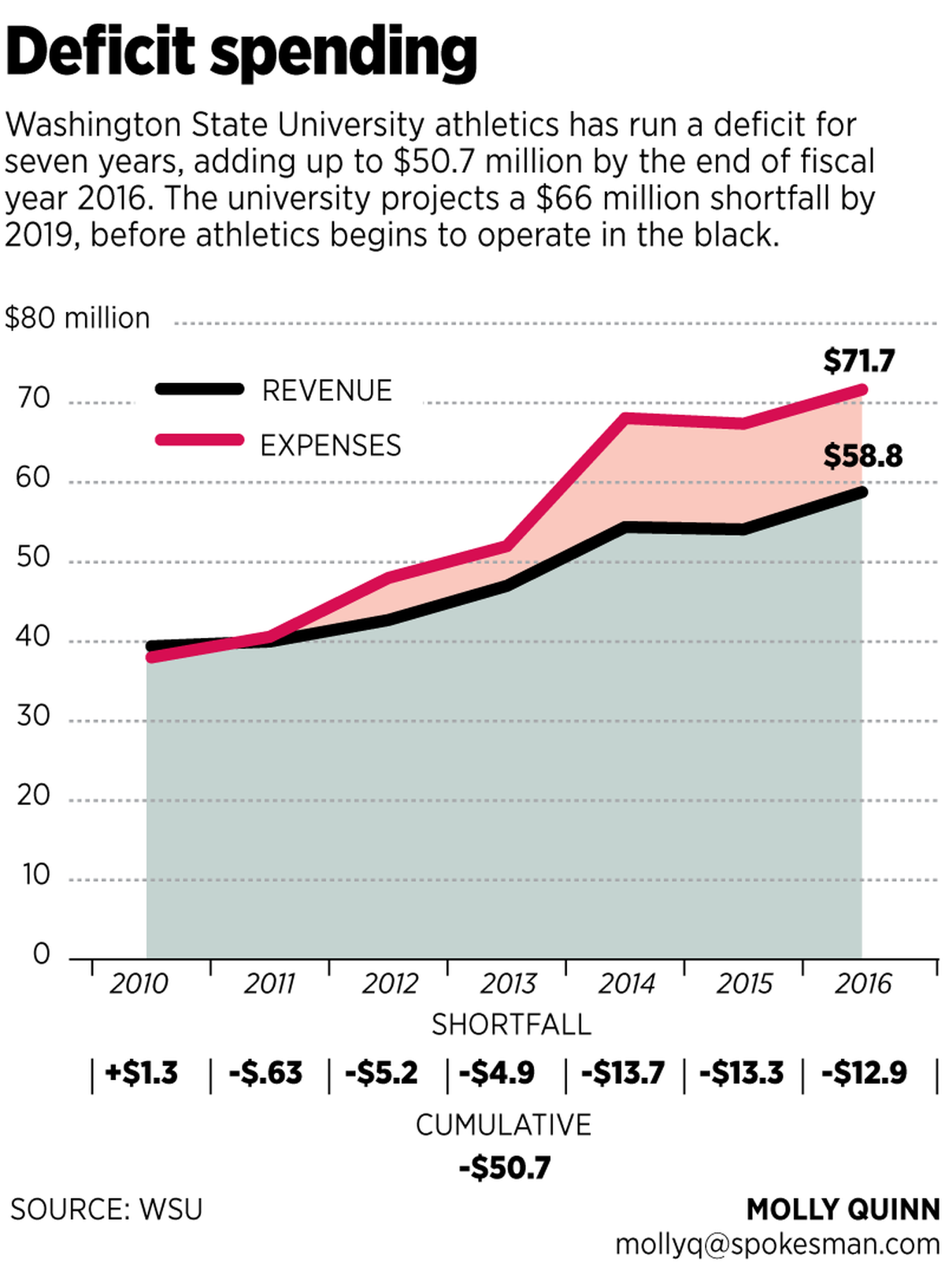This column reflects the opinion of the writer. Learn about the differences between a news story and an opinion column.
Shawn Vestal: Why isn’t cutting athletics spending at WSU part of the budget-balancing plan?
Columnist Shawn Vestal (Dan Pelle / The Spokesman-Review)
It will kick in more from the central university budget. It is banking on the proceeds from still-unapproved stadium beer sales. It is budgeting for increased ticket sales and donations and planning to ask students to pay an additional $100 a year.
One of the things it’s not doing: cutting athletics spending.
That’s right. Students are being asked to pay more and the university will contribute more, but no one in athletics will spend appreciably less. Other conference schools are outspending WSU on sports, you see, and must be kept up with.
I thought surely this couldn’t be true – the football team must be getting rid of one of its team chefs or something, just for the sake of appearances. But when I asked about detailed budget cuts in athletics, as opposed to comments about “belt-tightening,” I was assured that the plan was to raise more money, not spend less.
“Yes, revenue is the focus,” said Joan King, a WSU assistant vice president and budget czar.
How does this affect other university operations? King said it does not – that no professor went unhired, no academic department lost money, no student program was cut to cover the cost of an assistant coach’s bowl bonus. But the university is carrying a big note from athletics.
WSU athletics has compiled a $50.7 million deficit, as of the end of fiscal 2016, largely the result of expensive upgrades to the football facilities in combination with lower-than-expected TV revenues. Athletics began operating in the red in fiscal year 2011 – Bill Moos’ first year as athletic director – and it has accumulated ever since, running about $13 million in each of the past three years.
New President Kirk Schulz made a little noise earlier this year when he pointed out that this could not continue. He sent a letter to campus announcing that tighter budget times were coming, and he noted that athletics had been launching off on expensive projects without a clear sense of how they would be paid for. It was, reading between the lines, a spend-first, ask-questions-later approach.
According to the university’s plan to get sports back in the black, the shortfall is expected to exceed $66 million by the end of fiscal year 2019, after which athletics is expected to reach balance and begin repaying the deficit.
But that plan, presented to the board of regents last month, is full of contingencies (and it’s worth remembering that in 2014, WSU predicted athletics would be back in the black by 2017).
Notably, it outlines a student fee that would have to be approved by a vote of the student body, which seems at least uncertain. Officials have described this $100 annual fee as “modest.” The plan also relies on stadium beer sales in the current fiscal year – when such sales still have not been approved by the state and football season is well underway.
There is also a definite hopefulness in the calculations: they rely upon increasing ticket sales and increased fundraising, starting with an additional $1.3 million in the current fiscal year through $2.3 million in 2021.
Deficit spending as a ladder to the big time arrived with athletic director Moos in 2010, and the late President Elson Floyd apparently backed the decision to spend with more vigor than rigor. The sense of little-brotherism in WSU sports is pronounced, and there was a full buy-in, it seems, on the notion that the Cougs must catch up with the bigger spenders at literally all costs.
Since fiscal 2010, athletics spending rose by 89 percent. Revenues have also risen, but by just 49 percent. In 2016, athletics took in 78 cents for every dollar it spent. Still, Moos likes to point out how little WSU spends compared to other programs.
King, the assistant vice president, says the university is not bailing out athletics. For budgeting purposes, a deficit in the athletics department is offset by surpluses in other areas of the budget – bringing the overall WSU budget into balance. But King said no department actually loses surplus funds as a result of this, and the deficit does not go away.
In the highly complex scheme of university budgeting – with money coming in from scores of different sources on different timelines, and going out to scores of different programs, campuses and “areas” – the university is able to balance its overall budget without robbing programs to cover areas that are in the red, of which athletics is the largest.
“There is never a situation where we take money from a college and give it to athletics,” she said.
Still, the university will contribute more to sports in the years to come. Starting in 2018, it will pay $300,000 to operate the president’s box at Martin Stadium, since it’s such an important tool for overall university fundraising. The university will also start kicking in $900,000 a year for facilities operations, given that non-athletes use some of the athletic facilities, too.
In fiscal 2019, the university will take over academic support expenses to the tune of $1.1 million, and in 2020 it will pick up $1million for conference dues.
If all goes according to plan, athletics will post a $1.2 million surplus in 2021 – almost as big as the one that existed back when Moos first arrived in Pullman.
Shawn Vestal can be reached at (509) 459-5431 or shawnv@spokesman.com. Follow him on Twitter at @vestal13.


